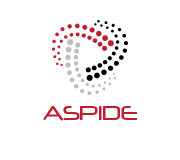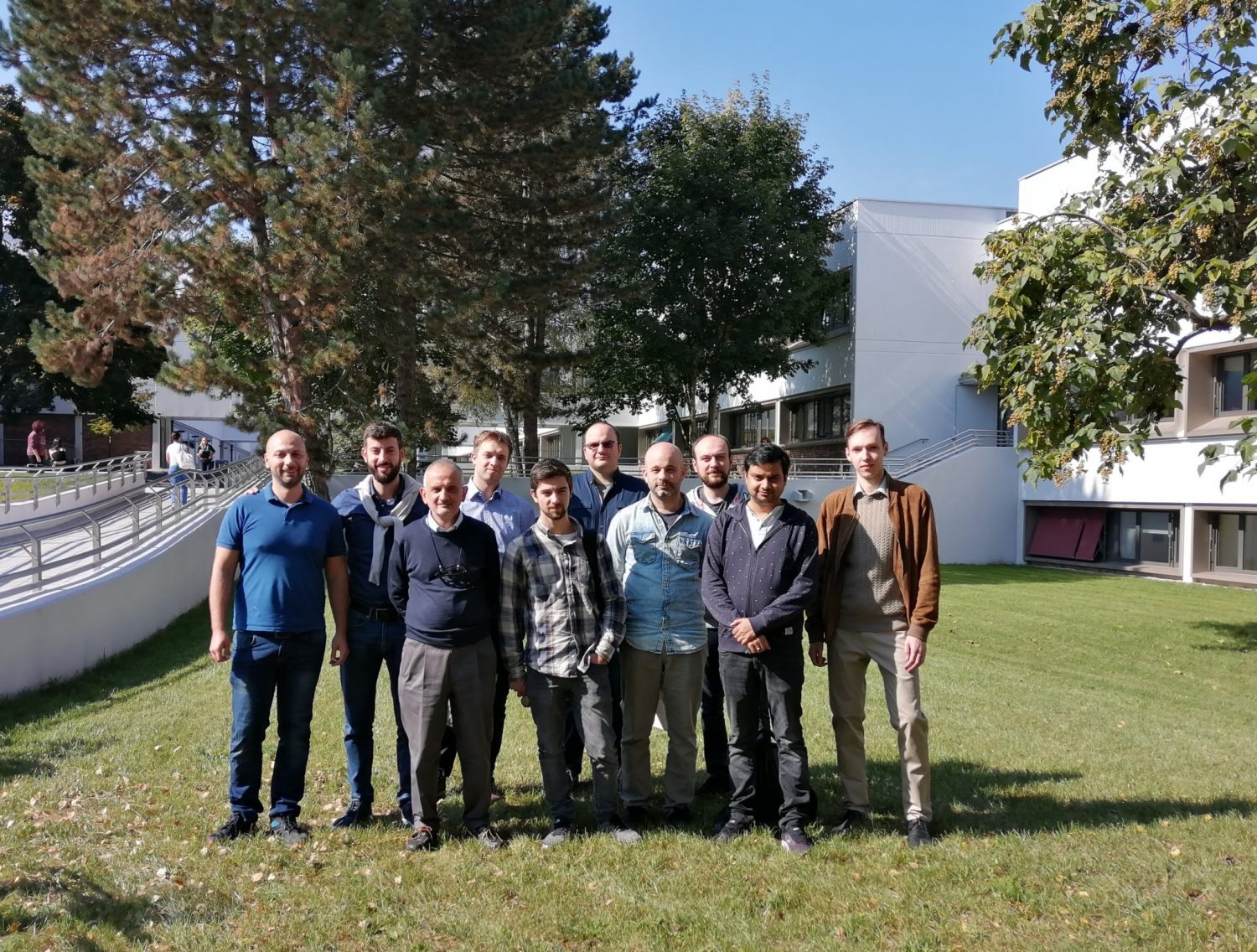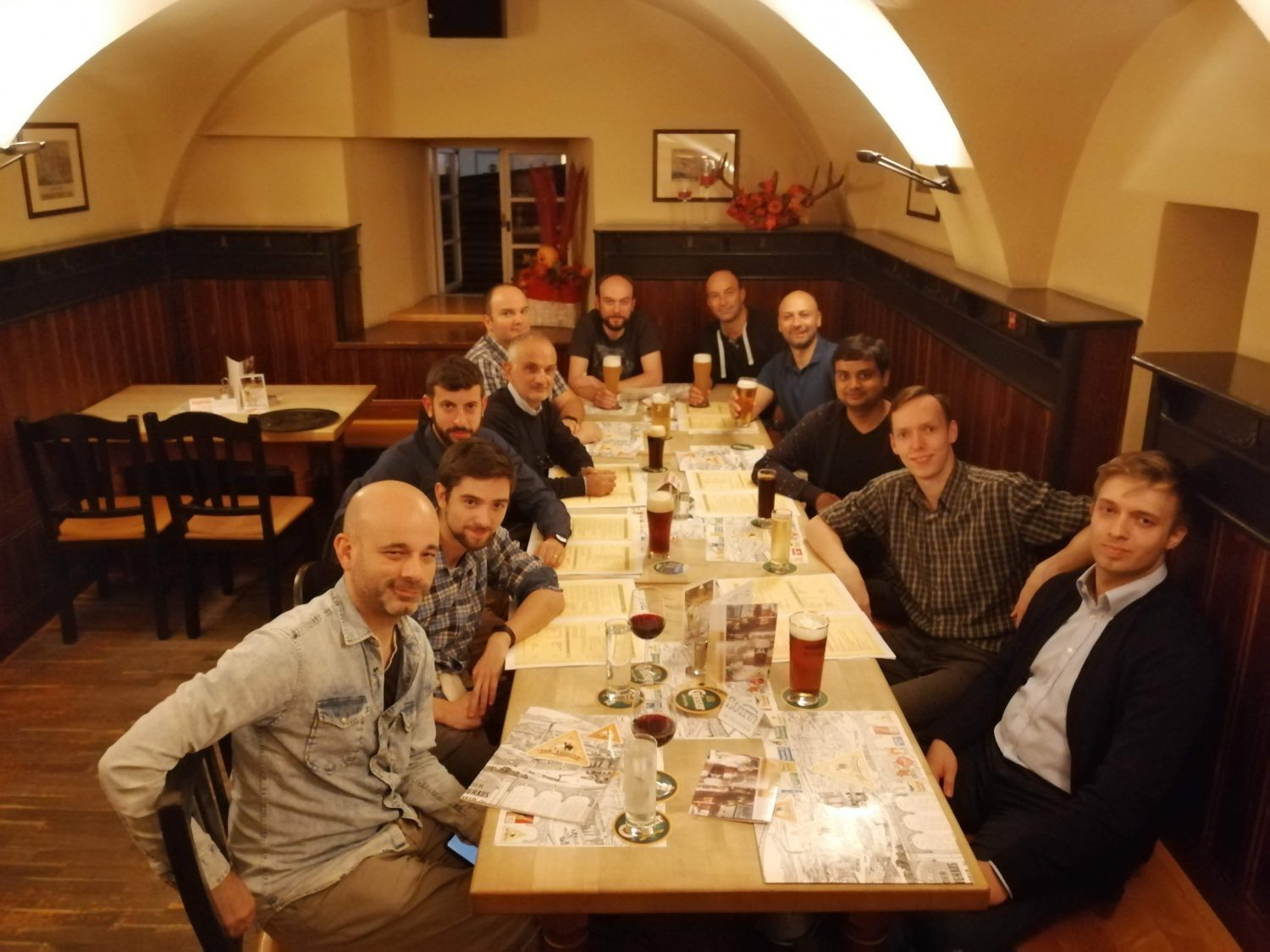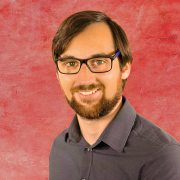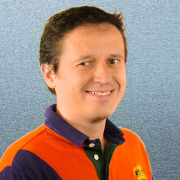The Klagenfurt University hosted the first ASPIDE technical meeting (30th September – 2nd October), which aims on designing scalable software solutions for exascale computing.
Our paper has been accepted for publication at the MMM 2020 Conference on Multimedia Modeling. The work was conducted in the context of the ongoing OVID project.
Authors: Natalia Sokolova, Klaus Schoeffmann, Mario Taschwer (AAU Klagenfurt); Doris
Putzgruber-Adamitsch, Yosuf El-Shabrawi (Klinikum Klagenfurt)
Abstract:
In the field of ophthalmic surgery, many clinicians nowadays record their microscopic procedures with a video camera and use the recorded footage for later purpose, such as forensics, teaching, or training. However, in order to efficiently use the video material after surgery, the video content needs to be analyzed automatically. Important semantic content to be analyzed and indexed in these short videos are operation instruments, since they provide an indication of the corresponding operation phase and surgical action. Related work has already shown that it is possible to accurately detect instruments in cataract surgery videos. However, their underlying dataset (from the CATARACTS challenge) has very good visual quality, which is not reflecting the typical quality of videos acquired in general hospitals. In this paper, we therefore analyze the generalization performance of deep learning models for instrument recognition in terms of dataset change. More precisely, we trained such models as ResNet-50, Inception v3 and NASNet Mobile using a dataset of high visual quality (CATARACT) and test it on another dataset with low visual quality (Cataract-101), and vice versa. Our results show that the generalizability is rather low in general, but clearly worse for the model trained on the high-quality dataset. Another important observation is the fact that the trained models are able to detect similar instruments in the other dataset even if their appearance is different.
The paper “GLENDA: Gynecologic Laparoscopy Endometriosis Dataset” has been accepted for publication at the Multimedia Datasets for Repeatable Experimentation (MDRE) special session, co-located at the 26th International Conference on Multimedia Modeling, MMM 2020 to be held at Daejon, Korea (January 5-8, 2020).
Authors: Andreas Leibetseder, Sabrina Kletz, Klaus Schoeffmann (Alpen-Adria Universität Klagenfurt), Simon Keckstein (Ludwig-Maximilians-University Munich), Jörg Keckstein (Ulm University)
Abstract: Gynecologic laparoscopy as a type of minimally invasive surgery (MIS) is performed via a live feed of a patient’s abdomen surveying the insertion and handling of various instruments for conducting treatment. Adopting this kind of surgical intervention not only facilitates a great variety of treatments, the possibility of recording said video streams is as well essential for numerous post-surgical activities, such as treatment planning, case documentation and education. Nonetheless, the process of manually analyzing surgical recordings, as it is carried out in current practice, usually proves tediously time-consuming. In order to improve upon this situation, more sophisticated computer vision as well as machine learning approaches are actively developed. Since most of such approaches heavily rely on sample data, which especially in the medical field is only sparsely available, with this work we publish the Gynecologic Laparoscopy ENdometriosis DAtaset (GLENDA) – an image dataset containing region-based annotations of a common medical condition named endometriosis, i.e. the dislocation of uterine-like tissue. The dataset is the first of its kind and it has been created in collaboration with leading medical experts in the field.
Keywords: lesion detection, endometriosis localization, medical dataset, region-based annotations, gynecologic laparoscopy
Acknowledgement: This work was funded by the FWF Austrian Science Fund under grant P 32010-N38.
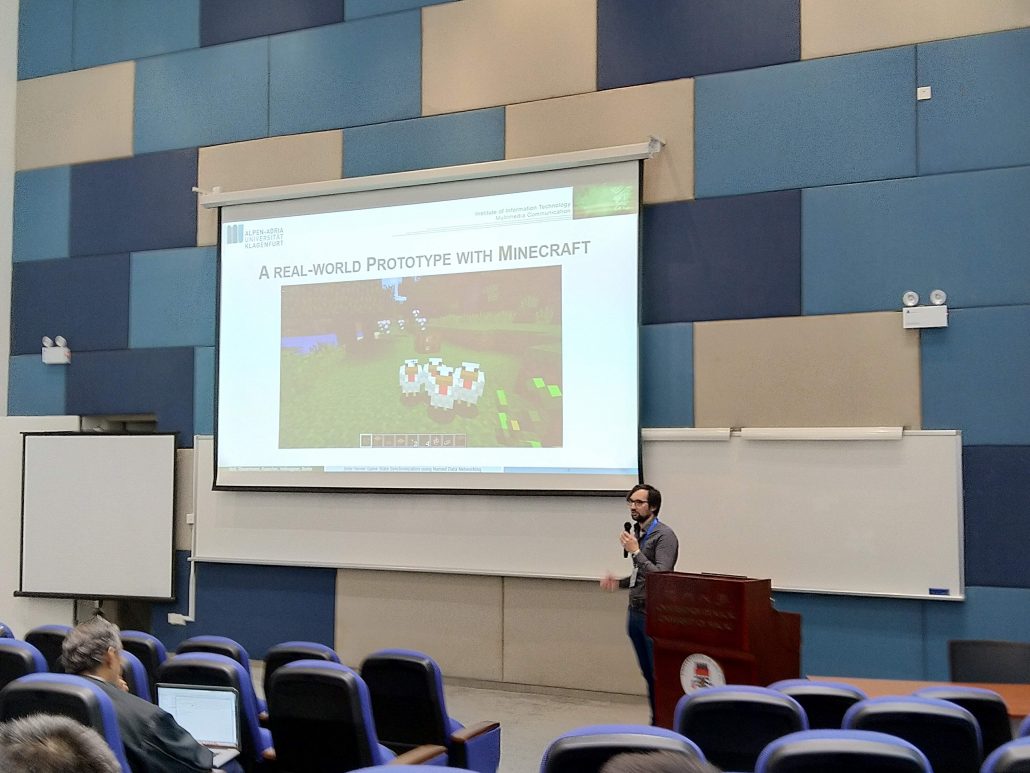 Philipp Moll presented the paper “Inter-Server Game State Synchronization using Named Data Networking” on the ACM Conference on Information-Centric Networking 2019 in Macau, China.
Philipp Moll presented the paper “Inter-Server Game State Synchronization using Named Data Networking” on the ACM Conference on Information-Centric Networking 2019 in Macau, China.
Authors: Philipp Moll, Sebastian Theuermann, Natascha Rauscher, Hermann Hellwagner (Alpen-Adria-Universität Klagenfurt), Jeff Burke (UCLA)
Abstract: In this paper, we develop a system for inter-server game state synchronization using the NDN architecture. We use Minecraft as a real-world example of online games and extend Minecraft’s single-server architecture to work as multi-server game. In our prototype,we use two different NDN-based approaches for the dissemination of game state updates in server clusters. In a naive approach, servers request game state updates for small segments of the game worldfrom other servers of the cluster. In an improved approach – the region manifest approach– servers identify changed parts of the world by subscribing to manifest files containing information about world regions managed by the other servers of the cluster. An apparent downside of the NDN approaches is the high overhead when handling small-sized game state updates, but our evaluation shows that NDN already improves on IP-based implementations regarding the resulting traffic volume when three or more servers are involved. Furthermore, caused by NDN’s inherent multicast functionality, the advantage over IP increases with the size of theserver cluster. Moreover, the use of NDN-based approaches leads to benefits beyond traffic reduction only. The name-based host-independent access to world regions allows to scale server clusters easier.
The paper full paper can be found on: https://conferences.sigcomm.org/acm-icn/2019/proceedings/icn19-25.pdf
@articonf at #ICTPropDay in #Helsinki (towards @DSMeu) pic.twitter.com/SiOqRfw8MA
— Radu Prodan (@RaduProdanAAU) September 20, 2019
The ACM Multimedia Systems Conference (MMSys) is held June 8-11, 2020 in Istanbul, Turkey and provides a forum for researchers to present and share their latest research findings in multimedia systems. While research about specific aspects of multimedia systems are regularly published in the various proceedings and transactions of the networking, operating systems, real-time systems, databases, mobile computing, distributed systems, computer vision, and middleware communities, MMSys aims to cut across these domains in the context of multimedia data types. This provides a unique opportunity to investigate the intersections and the interplay of the various approaches and solutions developed across these domains to deal with multimedia data types.
General Chairs
— Ali C. Begen (Ozyegin University and Networked Media, Turkey)
— Laura Toni (University College London, UK)
TPC Chairs
— Özgü Alay (Simula Metropolitan and University of Oslo, Norway)
— Christian Timmerer (Alpen-Adria-Universität Klagenfurt and Bitmovin, Austria)
Link: ACM MMSYS 2020
Abstract: Video streaming is one of the top traffic contributors in the Internet and a frequent research subject. It is expected that streaming traffic will grow 4-fold for video globally and 9-fold for mobile video between 2017 and 2022. In this paper, we present an automatized measurement framework for evaluating video streaming QoE in operational broadband networks, using headless streaming with a Docker-based client, and a server-side implementation allowing for the use of multiple video players and adaptation algorithms. Our framework allows for integration with the MONROE testbed and Bitmovin Analytics, which bring on the possibility to conduct large-scale measurements in different networks, including mobility scenarios, and monitor different parameters in the application, transport, network, and physical layers in real-time.
Authors: Cise Midoglu (Simula), Anatoliy Zabrovskiy (AAU), Özgü Alay (Simula), Daniel Hölbling-Inzko (Bitmovin), Carsten Griwodz (Univ. of Oslo), Christian Timmerer (AAU/Bitmovin)
Keywords: adaptive streaming, network measurements, OTT video analytics, QoE
Link: ACMMM 2019
Abstract: The increasing popularity of head-mounted devices and 360° video cameras allows content providers to offer virtual reality video streaming over the Internet, using a relevant representation of the immersive content combined with traditional streaming techniques. While this approach allows the user to freely move her head, her location is fixed by the camera’s position within the scene. Recently, an increased interest has been shown for free movement within immersive scenes, referred to as six degrees of freedom. One way to realize this is by capturing objects through a number of cameras positioned in different angles, and creating a point cloud which consists of the location and RGB color of a significant number of points in the three-dimensional space. Although the concept of point clouds has been around for over two decades, it recently received increased attention by ISO/IEC MPEG, issuing a call for proposals for point cloud compression. As a result, dynamic point cloud objects can now be compressed to bit rates in the order of 3 to 55 Mb/s, allowing feasible delivery over today’s mobile networks. In this paper, we propose PCC-DASH, a standards-compliant means for HTTP adaptive streaming of scenes comprising multiple, dynamic point cloud objects. We present a number of rate adaptation heuristics which use information on the user’s position and focus, the available bandwidth, and the client’s buffer status to decide upon the most appropriate quality representation of each object. Through an extensive evaluation, we discuss the advantages and drawbacks of each solution. We argue that the optimal solution depends on the considered scene and camera path, which opens interesting possibilities for future work.
Authors: Jeroen van der Hooft, Tim Wauters, Filip De Turck (Ghent University – imec), Christian Timmerer, and Hermann Hellwagner (Alpen-Adria-Universität Klagenfurt)
Keywords: HTTP adaptive streaming, MPEG-DASH, immersive video, point clouds, MPEG V-PCC, rate adaptation
Link: ACMMM 2019
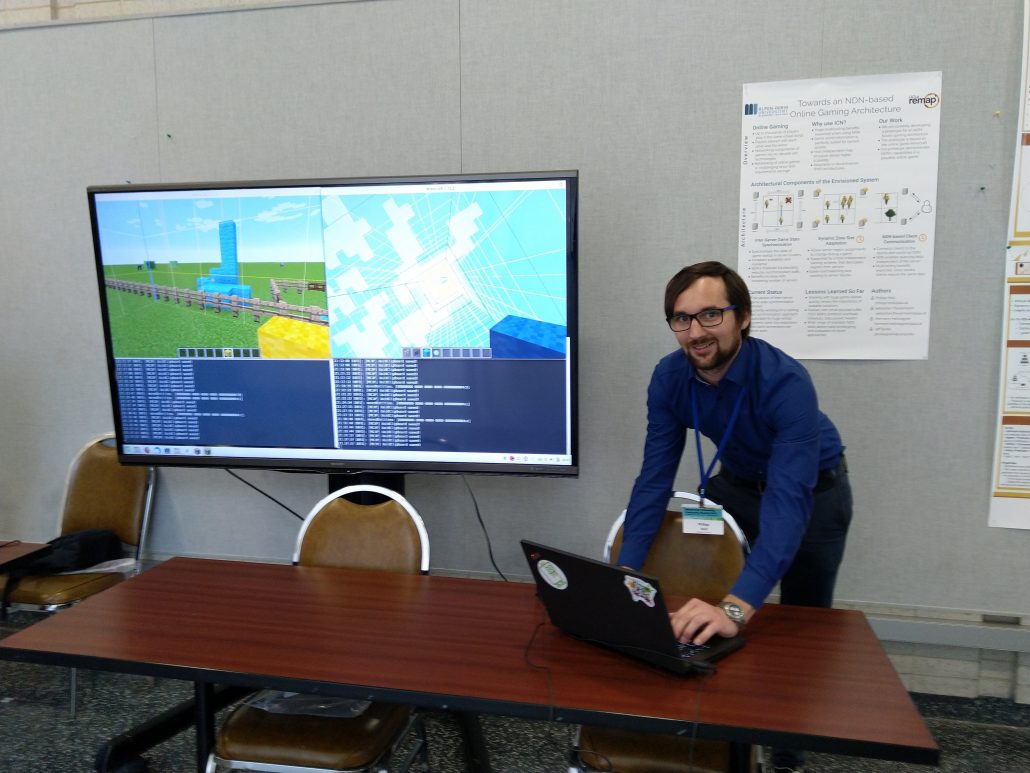 In the course of his research stay at UCLA, Philipp Moll attended the NDN Community Meeting 2019 and presented his work “Towards an NDN-based Online Gaming Architecture”.
In the course of his research stay at UCLA, Philipp Moll attended the NDN Community Meeting 2019 and presented his work “Towards an NDN-based Online Gaming Architecture”.
Abstract: The popularity of online games increased steadily during the last decades and nowadays games play an important role in the entertainment industry. Although the rising popularity of online games goes hand in hand with increased complexity of technical challenges, the networking stack of online games is built on decades-old technologies, which were never intended to be used in games, and is often responsible for crashing game servers during peak hours. Replacing the currently used connection-oriented networking approach by a content-centric architecture could yield advantages reaching beyond avoiding inefficiencies found in IP-based online games. We propose an NDN-based system for Massive Multiplayer Online Role-Playing Games (MMORPGs) which tackles issues found in IP-based systems.
Authors: Philipp Moll, Sebastian Theuermann, Hermann Hellwagner (Klagenfurt University), Jeff Burke (UCLA)
Links:
- NDN Community Meeting: https://www.nist.gov/news-events/events/2019/09/ndn-community-meeting
- Poster: NDNComm_Poster
Trust, privacy, control and what else ! Lets hear to ARTICONF consortium as what transpires them to build Next Generation Social Media Ecosystem with novel set of trustworthy, resilient, globally sustainable and decentralized data-driven services.

